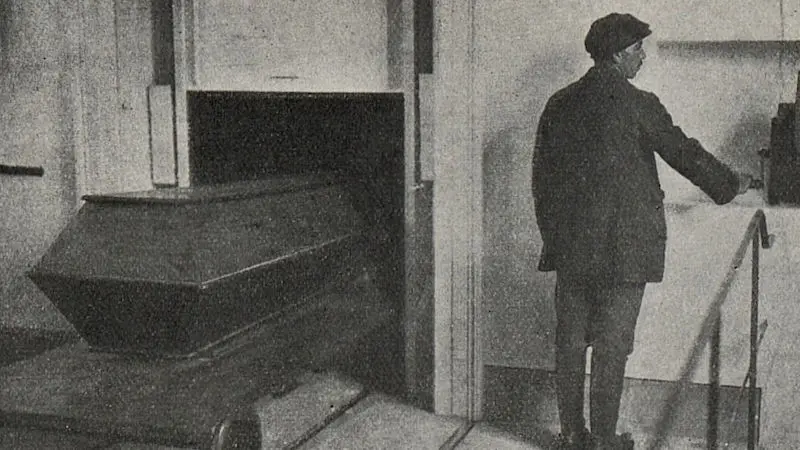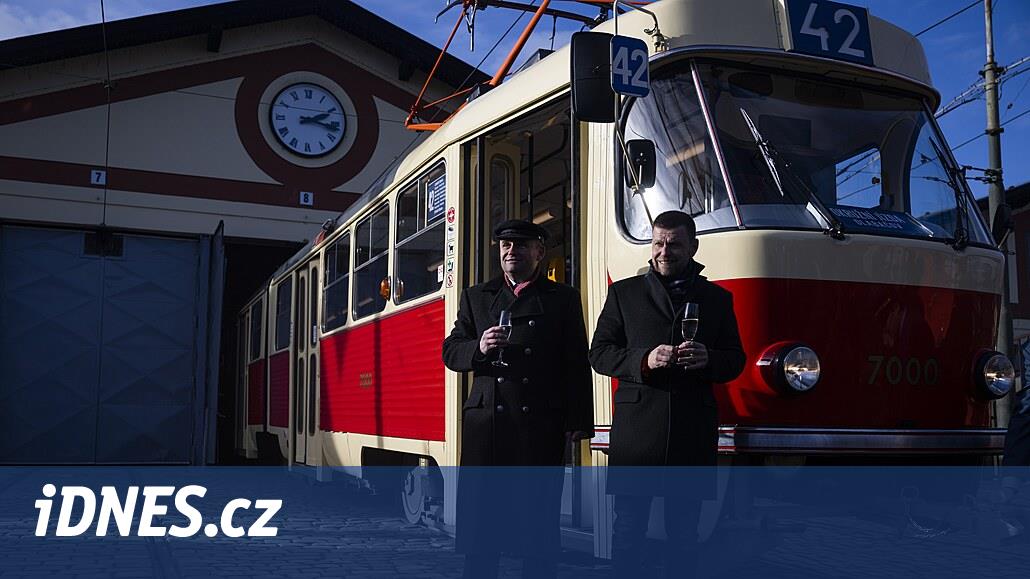One hundred years ago, the first cremation took place in Prague. Today, 90 percent of the dead are cremated there
While burials in Europe have been experienced by the Renaissance since the 1970s, this method of burial was not introduced in our country until after the establishment of Czechoslovakia in 1919. Until then, all cremations were outside Austria-Hungary.
“For example, the bodies of Vojtěch Náprstek, who was, among other things, a pioneer and a cremator and who died in 1894, went to Germany for incineration,” said Oldřiška Dvořáčková, a spokeswoman for the Prague Cemetery Administration.
Prague has long been looking for a place where its new crematorium could be established. However, proposals for construction in Vyšehrad, Ďáblice and Chodov, in addition to a number of protracted disputes. It temporarily solved the city’s problem by creating a temporary crematorium in the New Ceremonial Hall in Olšany Cemetery.
Period photograph from the temporary crematorium in the Olšany cemeteries (1921).
Photo: Czech world
The first person to be cremated in Prague and Bohemia was the doctor František Adamec on November 23, 1921. By the end of 1921 alone, another 116 dead had been cremated in Olšany. “There were two coke ovens here. The flue gases were discharged into the tower of the building, ”describes Dvořáčková.
“According to photos of cremations from that time, the farewell was carried out as standard, as we are used to today. This means that incineration has always preceded the farewell in the ceremonial hall and the combustion technologies were only in the background, “the spokesman added.
The last farewell to the bereaved in a temporary crematorium in the Olšany cemeteries (1921).
Photo: Czech world
Although the reconstruction of the ceremonial hall was only a temporary solution, the crematorium eventually remained in operation for another ten years. It did not end its activities until 1932, after the new Strašnice crematorium was opened according to the constructivist design by architect Alois Mezery. Its massive construction is to this day the largest crematorium in Europe.
New and at that time very progressive kilns were installed in it, thanks to which gasification began. “The gas was introduced at that time thanks to modern technology designed by engineer Havelka from Michelské plynáren,” said Dvořáčková, adding that the architects were inspired by the most modern crematoria in Europe during the construction.
The first large fully functional crematorium was built by the town in Strašnice in 1932.
Photo: SPH archive
The Motol crematorium also came to the Strašnice crematorium in the 1950s. In both of them, gas furnaces are still common practice, but combustion technologies have been significantly modernized in recent years.
Everything from start-up to the oven temperature is now controlled by the computer. Thanks to modern technologies, the burning time has been reduced from a few hours to 70 minutes. The burned body then heads to the so-called cremator, which can crush the bone remains.
Cremation elects up to 90 percent of the bereaved for their deceased, so the capital’s crematoria incinerate over eight thousand bodies a year. In Prague and its surroundings, iron has thus become the most sought-after way of the last farewell.
Today, the cremation process in Prague’s crematoria is computer-controlled.
Photo: News
In addition to the first cremation, the capital is commemorating its second round anniversary this year. “110 years ago, in 1911, Prague obtained a concession from the governor’s office to run funeral services,” the spokeswoman said.
At that time, the municipal Funeral Home of the Capital City of Prague also began to provide its services. In 1992, the Prague Cemeteries Administration separated from it, which manages 32 of the 70 Prague cemeteries.
To mark this anniversary, the Prague Cemeteries Administration has also published a series of information leaflets on the history of the city funeral home and prepared guided tours of both Prague crematoria.
110 years ago, the capital was granted a concession to operate a funeral home (period photograph from 1921).
Photo: SPH archive



